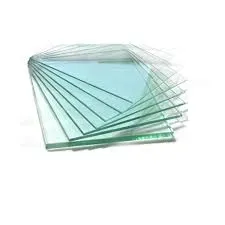The Aesthetic and Functional Appeal of Tinted Glass Colors
In the realm of architecture and interior design, tinted glass has emerged as a popular choice for both aesthetic and functional purposes. From skyscrapers to residential homes, tinted glass not only enhances visual appeal but also serves various practical functions. The nuances of its colors can dramatically influence the mood and ambiance of a space, making it a crucial element in design decisions. This article delves into the various shades of tinted glass, examining their applications, benefits, and the psychological impacts they can have on those who inhabit these spaces.
Understanding Tinted Glass
Tinted glass is produced by adding metal oxides or other substances to the glass during the manufacturing process. This results in a range of colors, from subtle hues like light grey and bronze to bold shades like blue and green. Each color serves a different purpose and can transform a mundane environment into a vibrant one.
The primary reasons for using tinted glass include reducing glare, controlling heat, and providing privacy. These features make tinted glass especially popular in commercial buildings, where excessive sunlight can lead to discomfort for occupants and a significant increase in energy costs.
The Versatile Palette of Tinted Glass Colors
1. Blue Tinted Glass This shade is often associated with calmness and tranquility. It reduces glare and can significantly cool down spaces that receive a lot of sunlight. In office environments, blue-tinted glass can create a serene atmosphere conducive to focus and productivity.
2. Green Tinted Glass Known for its natural aesthetics, green glass often mimics the hues of nature. It not only provides a refreshing look but also helps to regulate heat. This makes it a popular choice in residential homes where homeowners want to merge indoor and outdoor spaces harmoniously.
3. Bronze Tinted Glass This warm hue is often preferred for its classic and sophisticated appearance. Bronze glass is effective in reflecting solar heat, making it an excellent choice for buildings in warmer climates. Additionally, it reduces the penetration of UV rays, protecting interiors from damage while providing an elegant façade.
tinted glass colors
4. Grey Tinted Glass A versatile choice that fits well with modern architecture, grey glass offers a sleek, contemporary look. It is less reflective than other colors but still provides adequate glare reduction and solar control, making it suitable for both commercial and residential properties.
5. Amber and Gold Tinted Glass While less common, amber and gold tones provide a unique charm. They offer a warmer ambiance and can create a vintage or luxurious feel in a space. These colors are often used in artistic projects where a striking appearance is desired.
Practical Benefits of Tinted Glass
Beyond aesthetics, tinted glass provides numerous practical benefits. One of the most significant advantages is its ability to minimize energy consumption. By controlling solar heat gain, tinted glass can lead to reduced reliance on air conditioning systems, thus lowering energy bills.
Furthermore, tinted glass enhances privacy while still allowing natural light to filter through. This makes it particularly attractive for high-rise buildings where outdoor views are essential, but occupants seek to minimize the prying eyes of passersby.
Psychological Impacts of Color
The colors of tinted glass can significantly affect occupants’ moods and well-being. For instance, blue is known to evoke feelings of calmness, while green can instill a sense of balance and harmony. On the other hand, warmer colors like amber can create a cozy and inviting environment. Designers often consider these psychological associations when selecting colors for tinted glass, ensuring that the intended use of the space aligns with the emotional experience they wish to evoke.
Conclusion
Tinted glass colors are far more than mere visual enhancements; they embody a blend of art and science that caters to both aesthetic desires and functional necessities. As the architectural landscape continues to evolve, the role of tinted glass becomes increasingly prominent, offering diverse options that resonate with different tastes and needs. Choosing the right tinted glass color can significantly influence the comfort and mood of a space, emphasizing the importance of thoughtful design in our built environments. Whether it’s a serene blue or a rich bronze, each tint has the potential to transform how we experience our surroundings.
 Afrikaans
Afrikaans  Albanian
Albanian  Amharic
Amharic  Arabic
Arabic  Armenian
Armenian  Azerbaijani
Azerbaijani  Basque
Basque  Belarusian
Belarusian  Bengali
Bengali  Bosnian
Bosnian  Bulgarian
Bulgarian  Catalan
Catalan  Cebuano
Cebuano  Corsican
Corsican  Croatian
Croatian  Czech
Czech  Danish
Danish  Dutch
Dutch  English
English  Esperanto
Esperanto  Estonian
Estonian  Finnish
Finnish  French
French  Frisian
Frisian  Galician
Galician  Georgian
Georgian  German
German  Greek
Greek  Gujarati
Gujarati  Haitian Creole
Haitian Creole  hausa
hausa  hawaiian
hawaiian  Hebrew
Hebrew  Hindi
Hindi  Miao
Miao  Hungarian
Hungarian  Icelandic
Icelandic  igbo
igbo  Indonesian
Indonesian  irish
irish  Italian
Italian  Japanese
Japanese  Javanese
Javanese  Kannada
Kannada  kazakh
kazakh  Khmer
Khmer  Rwandese
Rwandese  Korean
Korean  Kurdish
Kurdish  Kyrgyz
Kyrgyz  Lao
Lao  Latin
Latin  Latvian
Latvian  Lithuanian
Lithuanian  Luxembourgish
Luxembourgish  Macedonian
Macedonian  Malgashi
Malgashi  Malay
Malay  Malayalam
Malayalam  Maltese
Maltese  Maori
Maori  Marathi
Marathi  Mongolian
Mongolian  Myanmar
Myanmar  Nepali
Nepali  Norwegian
Norwegian  Norwegian
Norwegian  Occitan
Occitan  Pashto
Pashto  Persian
Persian  Polish
Polish  Portuguese
Portuguese  Punjabi
Punjabi  Romanian
Romanian  Russian
Russian  Samoan
Samoan  Scottish Gaelic
Scottish Gaelic  Serbian
Serbian  Sesotho
Sesotho  Shona
Shona  Sindhi
Sindhi  Sinhala
Sinhala  Slovak
Slovak  Slovenian
Slovenian  Somali
Somali  Spanish
Spanish  Sundanese
Sundanese  Swahili
Swahili  Swedish
Swedish  Tagalog
Tagalog  Tajik
Tajik  Tamil
Tamil  Tatar
Tatar  Telugu
Telugu  Thai
Thai  Turkish
Turkish  Turkmen
Turkmen  Ukrainian
Ukrainian  Urdu
Urdu  Uighur
Uighur  Uzbek
Uzbek  Vietnamese
Vietnamese  Welsh
Welsh  Bantu
Bantu  Yiddish
Yiddish  Yoruba
Yoruba  Zulu
Zulu 

